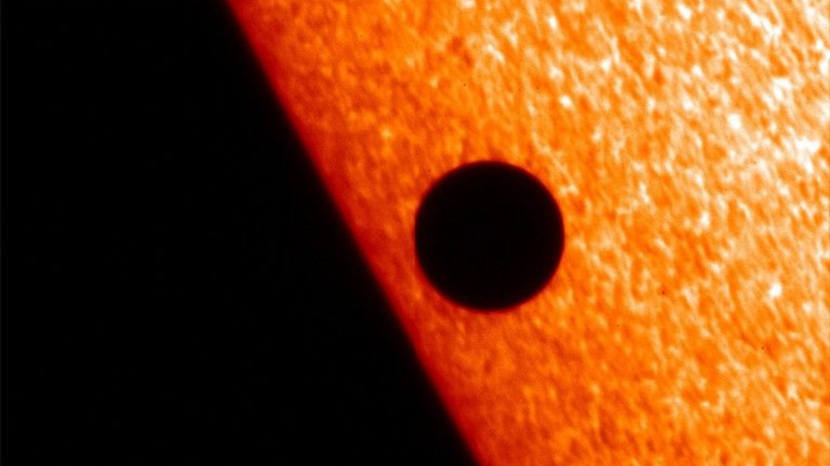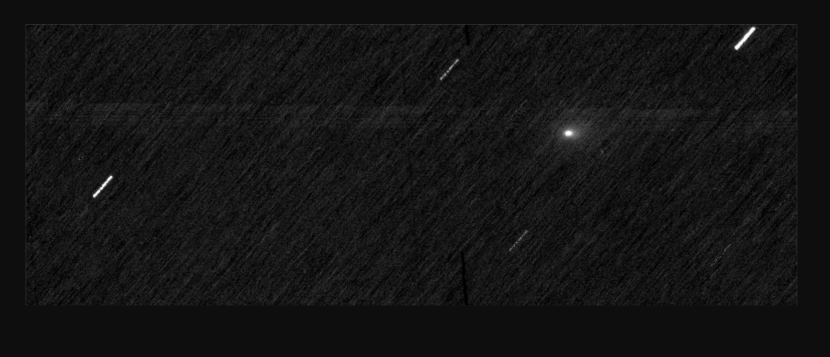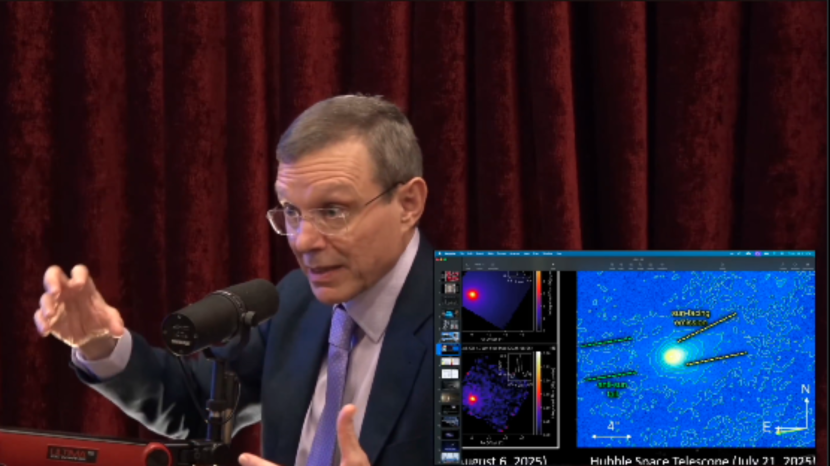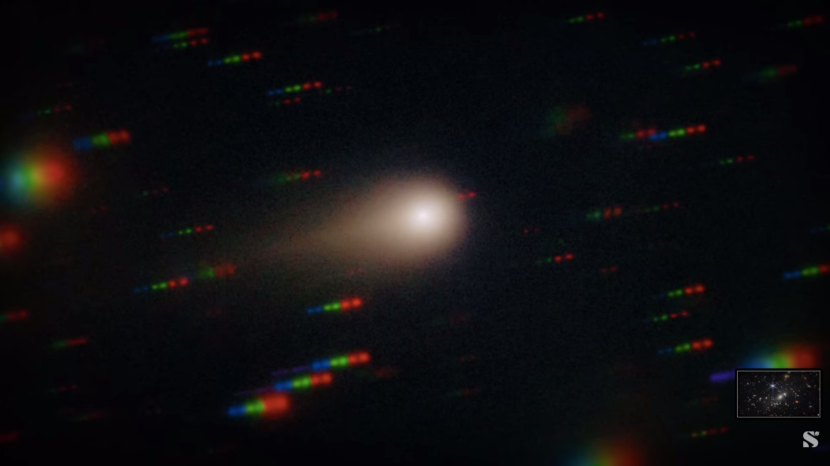
A mysterious visitor from interstellar space is making its closest pass by our Sun today, and one outspoken astronomer believes this is the moment of truth. The object, 3I/ATLAS, has intrigued scientists since its discovery in July.
But while most of the scientific community believes it is simply a comet made of carbon dioxide ice, outspoken Harvard astronomer Avi Loeb has proffered a far-fetched theory: it is a piece of alien technology.
Today, as 3I/ATLAS skims just 126 million miles from our star, Loeb argues it is the perfect time to find out if he is right. He is watching to see if it behaves like a simple rock, or something far more... intelligent.

The Ultimate 'Acid Test' for 3I/ATLAS
This close approach to the Sun, known as its perihelion, is what Loeb calls the 'ultimate 'acid test.'' In a blog post, he argued that this moment is the 'optimal time for either acceleration or deceleration by an impulse from an engine, thanks to the gravitational assist from the Sun.'
He points to the 'Oberth effect,' a physics principle determining that a rocket engine generates more energy when it is fired at a higher speed. If 3I/ATLAS is an 'alien mothership,' he suggests, it may utilise the Sun's boost to manoeuvre, 'continue along its original gravitational path and ultimately exit the Solar system.' He has even suggested that the object could release 'mini-probes' to continue to investigate the solar system on behalf of an intelligent alien race.

A 'Trojan Horse'? Loeb's Warning About 3I/ATLAS
Loeb is not just idly speculating; he is urging caution. He is calling on policymakers to 'take seriously the potential threat from a black swan event involving an unusually massive object moving along the ecliptic plane like 3I/ATLAS.'
In his latest blog post, he warned of the chilling possibility that 3I/ATLAS is a 'Trojan horse.' He fears it could be using the 'external appearance of a natural comet but carrying a potential threat in its interior.' This theory is bolstered, in his view, by data suggesting the object has a high abundance of nickel relative to iron, which he claims might mean it was 'technologically manufactured.'
🚨3I/ATLAS Just Proved It’s Not Moving Naturally 🧵
— Skywatch Signal (@UAPWatchers) October 31, 2025
Avi Loeb just confirmed the first evidence of a non-gravitational acceleration in 3I/ATLAS as it reached perihelion on Oct 29.
That means the object isn’t following the Sun’s pull alone, it’s propelling itself.👇 pic.twitter.com/kBpeDQHvFi
Fireworks or Probes: Observing the 3I/ATLAS Fly-By
As 3I/ATLAS approaches the Sun, it is expected to shed even more gases from its surface as a result of the increased solar radiation. 'The resulting fireworks might generate a much brighter cometary plume of gas and dust around it,' Loeb posited. This is what we would expect from a normal comet. 'However,' he continued, 'if 3I/ATLAS was technologically manufactured... it might maneuver or release mini-probes.'
Frustratingly, finding out if any of that actually happens will be difficult. Loeb concedes that 'we cannot observe 3I/ATLAS from Earth at this opportune time' as it is currently passing behind the Sun.
As 3I/ATLAS continues on its blazing-fast path, Loeb is not giving up hope of scanning the object for possible radio transmissions. In March, it is expected to pass within just 60 million miles of Venus, allowing the European Space Agency's Jupiter-bound JUICE mission to get a close glimpse.

The possibility of 3I/ATLAS turning out to be a remnant of an ancient civilisation is as slim as it has ever been. Even Loeb, who rates the possibility on his personal 'Loeb scale'—ten being 'confirmed artificial origin'—admits it is a pretty thin chance. 'If, as a result of the intense solar heating, 3I/ATLAS will show all the features of a natural comet,' he wrote, 'I will reduce its rank to 2 on the Loeb scale.'
As 3I/ATLAS completes its crucial pass by the Sun, the question remains: is it a natural comet, or an alien 'Trojan horse'? While we cannot observe the fly-by from Earth, the next major opportunity for answers will come in March as the object passes Venus. Will the ESA's JUICE mission get a glimpse of simple 'fireworks,' or will it spot the 'mini-probes' Avi Loeb has theorised?
Originally published on IBTimes UK
© Copyright IBTimes 2025. All rights reserved.








